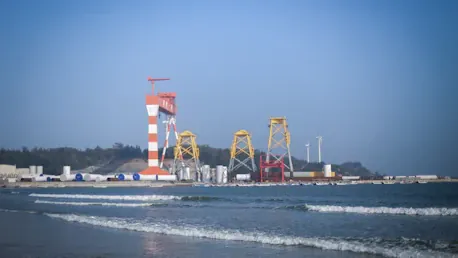Artificial intelligence is making waves in the domains of fluid dynamics and coastal engineering. Leveraging machine learning models, AI is streamlining processes, enhancing predictive capabilities, and addressing longstanding challenges. This roundup collates opinions, insights, and summaries from various experts, offering an in-depth perspective on how AI is transforming these critical fields.
Historical Context and Modern Relevance
AI’s integration into fluid dynamics and coastal engineering marks a significant departure from traditional methods. Historically, engineers and scientists relied on manual analysis and computational models that were resource-intensive and sometimes imprecise. Modern advancements in AI have introduced more accurate and less time-consuming alternatives, drawing substantial interest from industry leaders and academia alike.
The relevance of AI today cannot be overstated. Its application extends beyond mere efficiency; it encompasses enhanced predictive maintenance, disaster preparedness, and superior design of maritime structures. These developments hold profound implications for sustainability, economic growth, and strategic resilience of coastal communities.
Keeping abreast of cutting-edge developments is crucial, as AI continues to evolve rapidly. The future may present revolutionary changes in how fluid dynamics are understood and managed.
The Convergence of AI and Fluid Analysis
Case Studies: Machine Learning in Lubricant and Coolant Testing
The convergence of AI and fluid analysis is vividly illustrated in machine learning applications for testing lubricants and coolants. Industry experts note that traditional testing methods were slow and prone to errors. AI streamlines these processes by predicting fluid performance, detecting anomalies, and facilitating timely interventions, thereby improving machinery longevity and reliability.
Machine learning algorithms analyze vast datasets, offering detailed insights that help optimize lubricant formulations and maintenance schedules. This case study exemplifies the practical benefits of AI, including reduced downtime and enhanced operational efficiency.
Challenges and Opportunities in Modernizing Fluid Analysis
Modernizing fluid analysis with AI is not without its challenges. Key hurdles include data quality, integration complexities, and the need for specialized knowledge to interpret AI outputs. However, these challenges present opportunities for innovation and improvement. Investments in AI education, better data management practices, and collaborative efforts between AI experts and fluid engineers can overcome these barriers, leading to more robust and adaptive fluid analysis frameworks.
Transformative Impacts of AI on Coastal Engineering
Real-World Applications: Enhancing Maritime Structure Design
AI’s impact on coastal engineering is transformative, especially in designing maritime structures. By using predictive models, AI helps design structures that withstand environmental forces like waves, tides, and storms. Experts stress the importance of AI in simulating real-world conditions, leading to safer and more resilient coastal infrastructure.
Enhanced design processes lead to significant cost savings and safety improvements. AI models enable precise, data-driven decisions, ensuring that new constructions meet the highest standards of structural integrity.
Balancing Innovation with Environmental Stewardship
Balancing innovation with environmental stewardship is crucial. AI-driven models must incorporate sustainability principles to minimize ecological impacts. Industry leaders advocate for developing AI systems that not only optimize engineering processes but also prioritize environmental conservation. This dual focus ensures that advancements in technology benefit both human and natural ecosystems.
Advanced Techniques in Predictive Maintenance and Disaster Response
Regional Adaptations: AI in Different Coastal Environments
AI’s role in predictive maintenance and disaster response takes on unique dimensions in different coastal environments. Some regions face specific challenges, such as higher storm frequencies or unique tidal patterns. Adapting AI models to these regional peculiarities enhances their accuracy and effectiveness, providing tailored solutions that address local needs.
Deploying AI for regional adaptations helps to mitigate risks, ensure prompt responses to adverse events, and maintain the integrity and functionality of coastal structures.
Emerging Trends and the Future of AI in Coastal Defense
Emerging trends suggest that AI in coastal defense is poised for further innovation. Advanced machine learning techniques, including neural networks and graph models, are becoming more sophisticated. These technologies enhance the predictive accuracy for coastal erosion, flooding risks, and other hazards. Forward-looking experts believe that AI will continue to revolutionize coastal defense strategies, paving the way for more adaptive and resilient solutions.
Leveraging AI in Simulating Complex Fluid Dynamics
Expert Opinions: The Role of Neural Networks and Graph Models
Neural networks and graph models are instrumental in simulating complex fluid dynamics. Experts highlight their ability to process and learn from large datasets, offering superior accuracy in predicting fluid behaviors. These models are increasingly used for tasks such as pressure estimation and fluid flow prediction, showcasing their versatility and efficacy.
The inclusion of these advanced models in fluid dynamics research heralds a new era of precise and efficient simulations, enhancing the overall understanding of fluid mechanics.
Speculative Directions: The Next Frontier in Fluid Simulation
Speculative directions in fluid simulation suggest that AI will drive even more sophisticated innovations. Future advancements may include more nuanced models that account for previously unconsidered variables, enabling a deeper comprehension of fluid dynamics. Some researchers suggest that next-gen AI systems could potentially model fluid behaviors in real time, offering unprecedented capabilities for both scientific exploration and practical applications.
Key Insights on AI Applications in Fluid Dynamics
Key insights into AI applications in fluid dynamics underscore its transformative potential. Best practices for industry implementation involve meticulous data management, continuous model refinement, and interdisciplinary collaboration. Ensuring accuracy and sustainability in fluid analysis and coastal engineering remains paramount.
Recommended Best Practices for Industry Implementation
Recommendations for industry implementation center on leveraging AI’s strengths while addressing its limitations. It is crucial to establish robust data infrastructures, prioritize training for engineers and technicians, and foster a collaborative environment where AI initiatives can thrive. Practical applications of AI in fluid dynamics should consider both efficiency gains and environmental impacts.
Recapping the Transformative Potential of AI
The transformative potential of AI in fluid dynamics and coastal engineering has been recognized by industry leaders and researchers alike. Recent developments showcased AI’s ability to enhance predictive maintenance, streamline fluid analysis, and improve maritime structure design. It is vital to continue exploring and integrating AI-driven solutions to address evolving challenges and opportunities in these critical domains.
Highlighting Continuing Developments and Long-Term Vision
Continuing developments in AI highlight its long-term vision for transforming fluid dynamics and coastal engineering. These fields are witnessing remarkable progress through AI-enhanced simulations, predictive models, and innovative engineering solutions. Embracing these advancements will play a pivotal role in shaping a sustainable future for coastal environments.
Closing Thoughts: Embracing AI for a Sustainable Future in Coastal Engineering
Embracing AI for a sustainable future in coastal engineering promises to drive industry growth, environmental stewardship, and technological innovation. By harnessing AI’s potential, stakeholders can achieve significant advancements in fluid dynamics, bolster coastal defenses, and ensure resilient infrastructures. The journey toward smarter, cleaner ocean engineering has begun, and the prospects seem brighter than ever.









